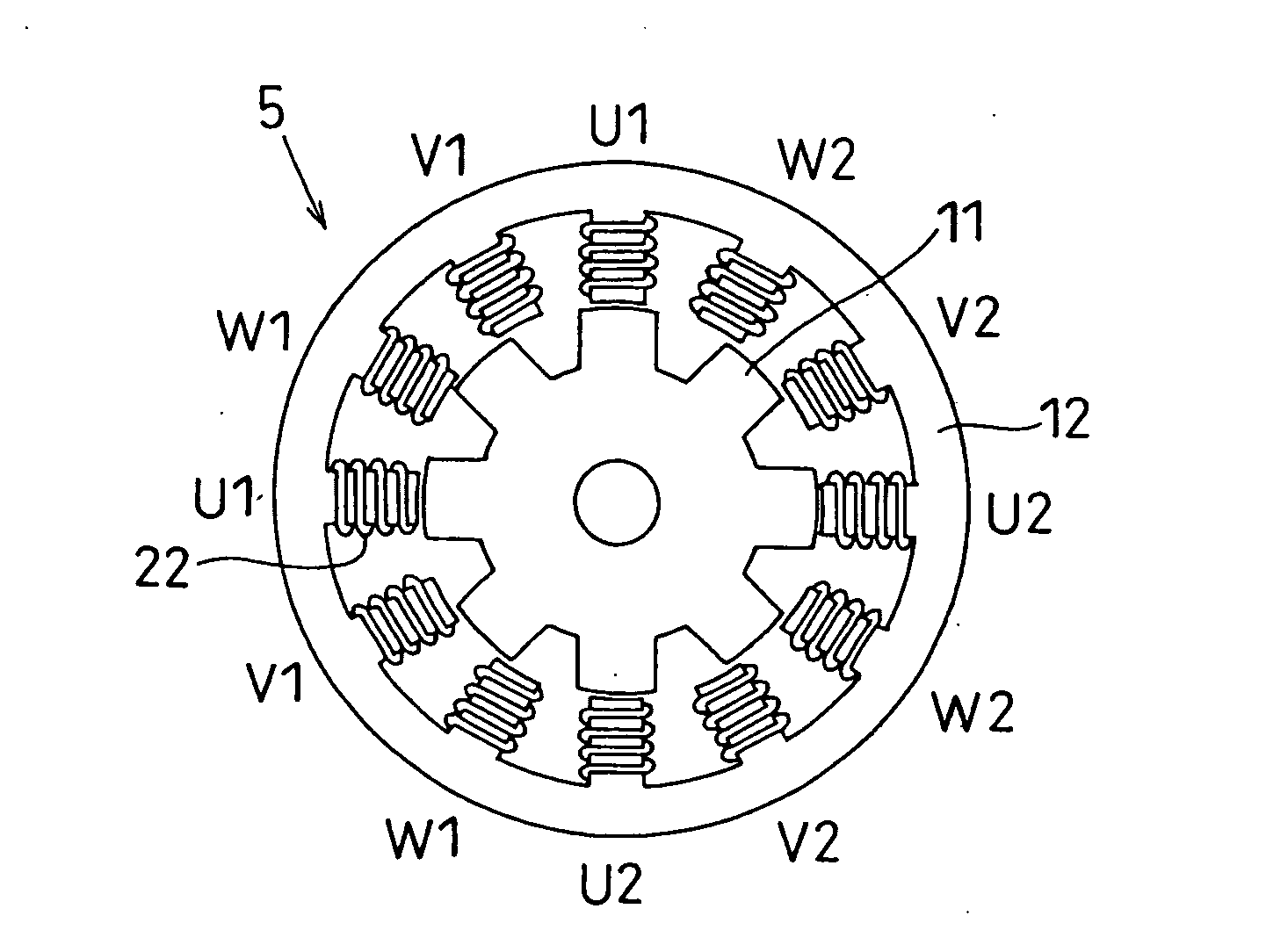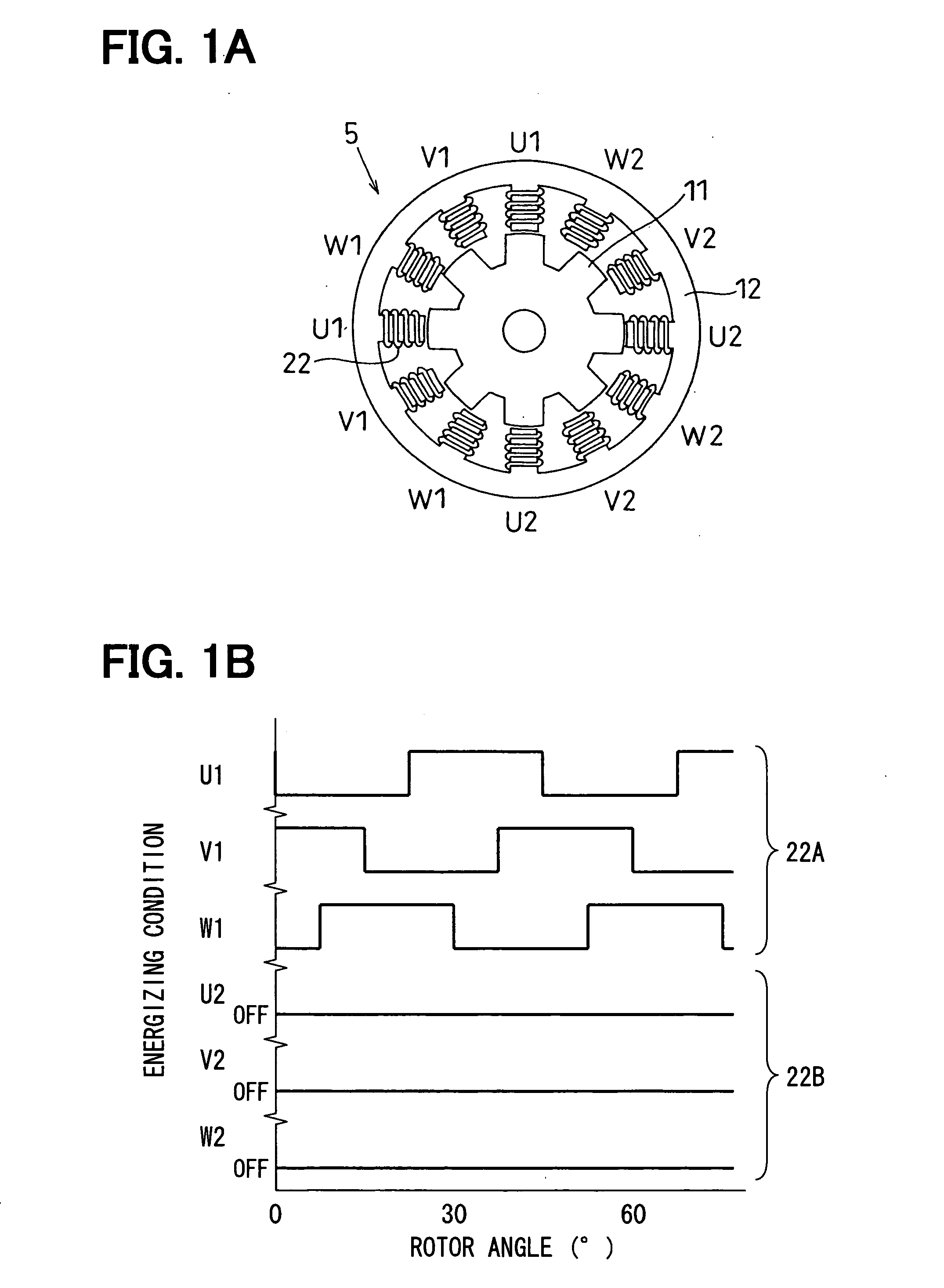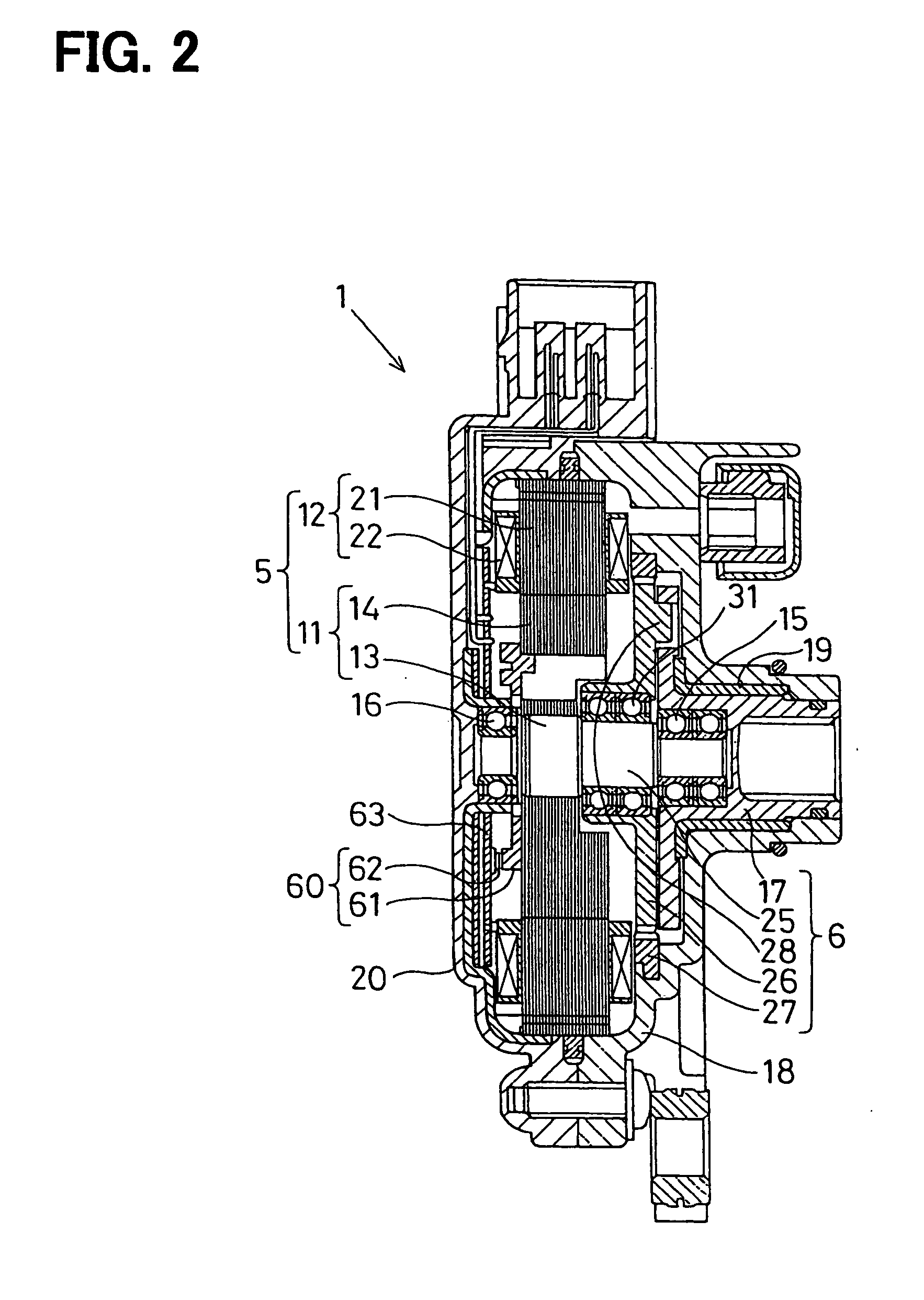Position detecting apparatus having electric motor and method for detecting position
a technology of position detecting and electric motor, which is applied in the direction of motor control of motor oscillation damping, magnetic circuit, synchronous motor, etc., can solve the problems of increasing the output torque of the motor in dependence on the environment, deformation and breakage of components of the transmission system and the hooking portion, and the collision of components can cause the load to be reduced, and the mechanical damage of the components can be reduced
- Summary
- Abstract
- Description
- Claims
- Application Information
AI Technical Summary
Benefits of technology
Problems solved by technology
Method used
Image
Examples
first embodiment
[0035] As shown in FIGS. 1A to 3, a shift range switching apparatus includes a rotative actuator 1 (FIG. 2) that switches a shift range switching device 3, which includes a parking switching device 4 (FIG. 4). The shift range switching device 3 is an example of a driven object. The shift range switching device 3 is provided to an automatic transmission 2 of a vehicle. The rotative actuator 1 is a servo device that operates the shift range switching device 3. The rotative actuator 1 includes a synchronous electric motor 5 and a reduction gear (reduction unit) 6. The reduction gears 6 reduce rotation speed of the electric motor 5. The electric motor 5 is controlled using an ECU (electronic control unit) 7. The ECU 7 serves as a motor control unit.
[0036] Specifically, the ECU 7 controls the rotative direction of the electric motor 5, the rotation speed (number of rotation) of the electric motor 5, and rotation angle of the electric motor 5 in the shift range switching apparatus, there...
second embodiment
[0117] The characteristic of the battery (power source), which supplies electricity to the electric motor 5, may vary in dependence upon the environment of the battery. Specifically, output voltage of the battery and a performance for supplying electricity to the electric motor 5 may vary in dependence upon the environment such as the season. In particular, the variation in the characteristic of the battery is apt to be large in summer and winter. In these cases, output torque of the electric motor 5 may vary due to the variation in output voltage of the power source and the variation in the capacity of the power source for supplying electricity.
[0118] Furthermore, the components are not completely rigid members, and may be deformed by applying force. That is, the components are macroscopically spring elements. Accordingly, when the output torque of the electric motor 5 varies, an amount of deformation arising in the components in the tapping control may vary. As a result, the refe...
third embodiment
[0132] As the rotation speed of the electric motor 5 increases, the output torque of the electric motor 5 is apt to decrease. By contrast, as the rotation speed of the electric motor 5 decreases, the output torque of the electric motor 5 is apt to increase. Therefore, the electric motor 5 generates substantially the maximum torque when the electric motor 5 stops. That is, when the hooking portion 47a of the detent spring 47 collides against the restriction wall of the detent plate 46, and the electric motor 5 stops during the tapping control, the electric motor 5 generates substantially the maximum torque.
[0133] Accordingly, as the number of the tapping control increases, mechanical damage may occur in the components of transmission system and in the hooking portion. As a result, the components of the transmission system and the hooking portion may be gradually deformed and broken.
[0134] Furthermore, the components are not completely rigid, and may macroscopically be spring elemen...
PUM
 Login to View More
Login to View More Abstract
Description
Claims
Application Information
 Login to View More
Login to View More - R&D
- Intellectual Property
- Life Sciences
- Materials
- Tech Scout
- Unparalleled Data Quality
- Higher Quality Content
- 60% Fewer Hallucinations
Browse by: Latest US Patents, China's latest patents, Technical Efficacy Thesaurus, Application Domain, Technology Topic, Popular Technical Reports.
© 2025 PatSnap. All rights reserved.Legal|Privacy policy|Modern Slavery Act Transparency Statement|Sitemap|About US| Contact US: help@patsnap.com



